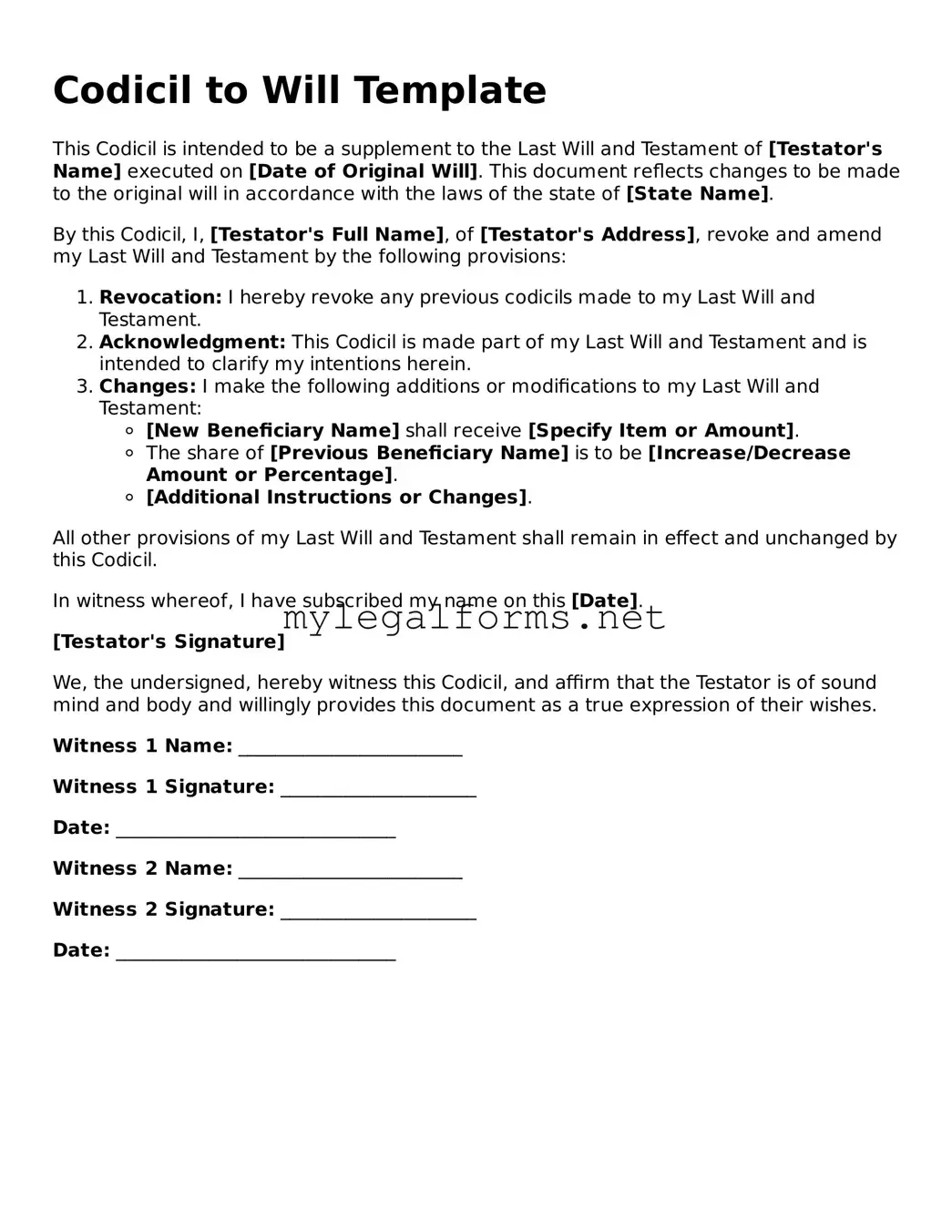Codicil to Will Template
This Codicil is intended to be a supplement to the Last Will and Testament of [Testator's Name] executed on [Date of Original Will]. This document reflects changes to be made to the original will in accordance with the laws of the state of [State Name].
By this Codicil, I, [Testator's Full Name], of [Testator's Address], revoke and amend my Last Will and Testament by the following provisions:
- Revocation: I hereby revoke any previous codicils made to my Last Will and Testament.
- Acknowledgment: This Codicil is made part of my Last Will and Testament and is intended to clarify my intentions herein.
- Changes: I make the following additions or modifications to my Last Will and Testament:
- [New Beneficiary Name] shall receive [Specify Item or Amount].
- The share of [Previous Beneficiary Name] is to be [Increase/Decrease Amount or Percentage].
- [Additional Instructions or Changes].
All other provisions of my Last Will and Testament shall remain in effect and unchanged by this Codicil.
In witness whereof, I have subscribed my name on this [Date].
[Testator's Signature]
We, the undersigned, hereby witness this Codicil, and affirm that the Testator is of sound mind and body and willingly provides this document as a true expression of their wishes.
Witness 1 Name: ________________________
Witness 1 Signature: _____________________
Date: ______________________________
Witness 2 Name: ________________________
Witness 2 Signature: _____________________
Date: ______________________________
